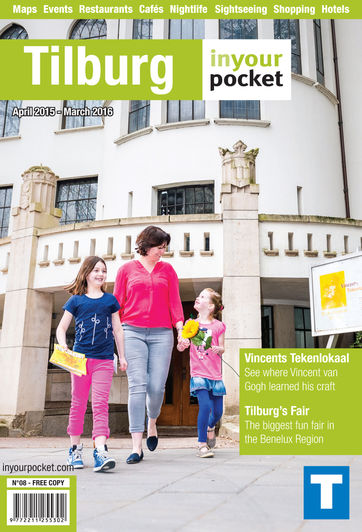Today, kermiskoek can be bought at fun fairs in the region, but the origin of the cakes lies in Tilburg.
Tilburg’s own called the Toepertoetje. The name is loosely based on a French word that means
‘without limits’. It is an airy, square cake with hazelnut and almond pieces, chocolate cream and chocolate on top. Should you already be salivating don’t fret: you can buy it at most bakeries in Tilburg.
Tilburg’s most well-known snack is the Broodje Jantje. A Broodje Jantje is a sandwich with a burger, fried onions and spicy tomato sauce.
You can only buy it at the shop of the same name on the Pieter Vreedeplein. The sandwich was named after the person who thought up its unique recipe. If you visit Tilburg, you have to taste one, but beware. There’s a good chance you’ll make a mess!
Tilburg has always been an important wine town. The story goes that the export of textiles to France and Germany caused empty return cargo. The textile manufacturers thought this was wasteful, and therefore they gave an assignment to return with wine. This caused a lively wine trade that companies such as Kerstens and Verbunt began taking very seriously towards the end of the 19th century. Today, a “Tilburg wine town wine” is proclaimed each year. This wine gets a unique label, made by a local artist and is presented around the time of the Tilburg Culinary Festival and the Tilburg wine feasts. Apart from this particular wine, there are more Tilburg wines. There’s even a King William II wine, whose label displays the palace of the former royal.
The most well-known Tilburg liqueur is Schrobbeler. This bitter can be found in a characteristic stone bottle and is consumed in large quantities during the Carnival feast. The name refers to a profession in the textile industry.
A schrobbeler was someone who spun wool.
Another popular liqueur in Tilburg is HullieGullie. The name of this chocolate liqueur refers to the HullyGully, a fun fair attraction from the days of yore. HullieGullie in a Tilburg dialect means ‘them’ and ‘you’. The Tilburgs Knipoogske is yet another liqueur much appreciated by Tilburgers.
Peerke’s Nat is another bitter with a somewhat higher alcohol percentage than Schrobbeler. This liqueur was named after Peerke Donders, a missionary priest who was beatified in 1982.
The strongest Tilburg liqueur is the Tilburgs Kwartierke (Tilburg Quarterof-an-Hour), a liqueur with no less than 30% alcohol. The Tilburgs Kwartierke refers to the Tilburg custom to always
arrive everywhere a quarter of an hour late.
Tilburg has its own microbrewery, Moerenburg, where the Tilburg Tripel and Het Vervolg (the Continuation) are brewed. The most well-known beer that comes from Tilburg is still La Trappe, Holland’s only official Trappist beer. The beer is
brewed in the abbey of Onze Lieve Vrouw van Koningshoeven, just outside Tilburg and the brewery is open to the public.
Another famous local beer is Tilburgs Praotwaoter. This beer is brewed both
as a triple and as a double. On the label you can see various buildings in Tilburg, which makes the beer not only tasty, but also a fun souvenir.
Last but not least, D’n Kruik (The bottle) is a special beer that carries the honorary title of all Tilburgers. As the nickname for any Tilburger is Kruikenzeiker (one who urinates in bottles),
a name that stems from the textile industry. In the 17th and 18th century Tilburg’s residents collected their urine in bottles, which were then used for washing wool. We can assure you that the bottles that are sold today will contain something much more appetising!





Comments